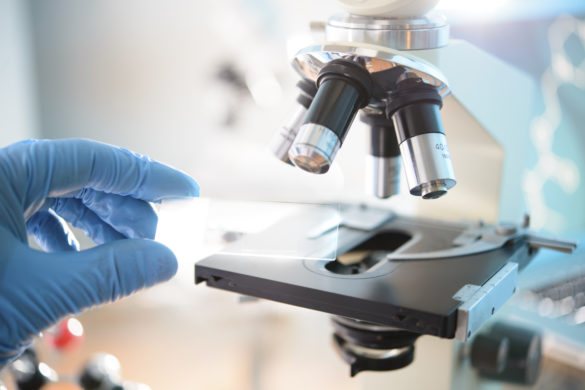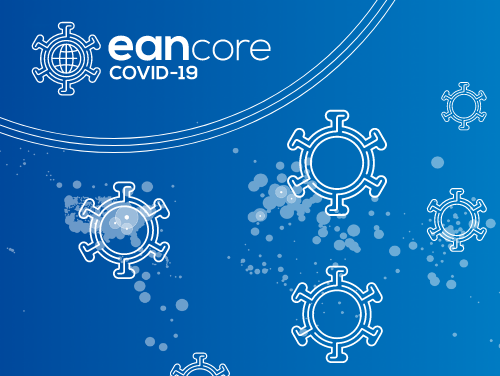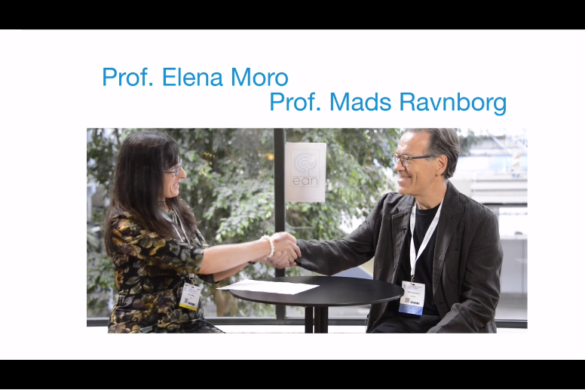Symposium 2: Insights into Headache Pathophysiology
Room Lisbon, Saturday June 29, 2019: 10:30 – 12:30
Insights from the ergot derivatives and triptans
S. Evers; Coppenbrügge/DE
What does the efficacy of neurostimulation tell us?
P. Goadsby; London/UK
CGRP and PACAP mechanisms
M. Ashina; Glostrup/DK
Insights from medication overuse headache
A. Lundqvist; Lørenskog/NO
By David García Azorín
In this session, excellent speakers reviewed the past, present and future of headache treatment, starting from headache pathophysiology and explaining where do the different therapies act specifically. Professor Evers discovered us that the first clinical trial using ergot derivates dates from 1925, followed by dihidroergotamine a few years after. It is still surprising how a drug initially used in obstetrics moved to the headache field. Insights on vascular changes during episodes and the role of serotonine lead to the development of triptans. The specific profiles of triptan drugs were discussing, analyzing how the affinity for each receptor and the different half-life makes each member of the “triptan family” unique.
 Professor Goadsby explained how the different non-invasive and invasive devices, analyzing where do they act in the trigeminoautonomic reflex or the confluence of the cranial trigeminal and first upper cervical branches. This afferent terminals converge in the brainstem, creating a “warning system” rather than a “localizing” system. Afterwards, he presented data from clinical trials on Transcranial Magnetic Stimulation, non-invasive Vagal Nerve Stimulation, external Trigeminal Nerve Stimulation and Sphenopalatine Ganglion Stimulation. Neuromodulation in headache will be a well-tolerated option for patients in a close future. Despite surprisingly Prof. Goadsby did not pronounced the word CGRP in his whole lecture, professor Ashina reviewed the story of Calcitonin Gene-Related Peptide (CGRP) since 1982 to 2019, how animal and human studies analyzed the role that CGRP plays in migraine. Many drugs act on CGRP, starting with triptans and ending with the novel monoclonal antibodies erenumab, fremanezumab, galcanezumab and eptinezumab; and also the oral CGRP antagonists, many of them stopped its development due to hepatotoxicity, but atogepant is currently being developed as an oral preventive therapy. Pituitary Adenylate Cyclase Activating Polypeptide (PACAP) acts on PAC-1, PAC2 and vPAC receptors, with 1000 times higher efficacy over PAC-1 receptor than VIP. Professor Ashina presented some studies from the Danish group in which they injected to happy danish people CGRP or PACAP, provoking migraine-like headache. Professor Lundqvist finished the session by pointing the risks of overuse of the different treatments. It is truth that, as William Osler described, patients feel that the medical act is not complete without the prescription. Up to 2% of the population suffers from medication overuse headache (MOH), being this one of the main risk factors for chronification of primary headache disorders. Professor Lundqvist analyzed similarities between MOH and other addictions and discussed the main approaches in the detoxification of patients. Some countries defend the detoxification strategy without starting preventive drugs whereas others usually put patients on prophylactic. What is completely clear is that we should raise the awareness about MOH, avoid it and detoxify patients. Headache field is becoming interesting and a better knowledge about pathophysiology will led us to a more precise medicine.
Professor Goadsby explained how the different non-invasive and invasive devices, analyzing where do they act in the trigeminoautonomic reflex or the confluence of the cranial trigeminal and first upper cervical branches. This afferent terminals converge in the brainstem, creating a “warning system” rather than a “localizing” system. Afterwards, he presented data from clinical trials on Transcranial Magnetic Stimulation, non-invasive Vagal Nerve Stimulation, external Trigeminal Nerve Stimulation and Sphenopalatine Ganglion Stimulation. Neuromodulation in headache will be a well-tolerated option for patients in a close future. Despite surprisingly Prof. Goadsby did not pronounced the word CGRP in his whole lecture, professor Ashina reviewed the story of Calcitonin Gene-Related Peptide (CGRP) since 1982 to 2019, how animal and human studies analyzed the role that CGRP plays in migraine. Many drugs act on CGRP, starting with triptans and ending with the novel monoclonal antibodies erenumab, fremanezumab, galcanezumab and eptinezumab; and also the oral CGRP antagonists, many of them stopped its development due to hepatotoxicity, but atogepant is currently being developed as an oral preventive therapy. Pituitary Adenylate Cyclase Activating Polypeptide (PACAP) acts on PAC-1, PAC2 and vPAC receptors, with 1000 times higher efficacy over PAC-1 receptor than VIP. Professor Ashina presented some studies from the Danish group in which they injected to happy danish people CGRP or PACAP, provoking migraine-like headache. Professor Lundqvist finished the session by pointing the risks of overuse of the different treatments. It is truth that, as William Osler described, patients feel that the medical act is not complete without the prescription. Up to 2% of the population suffers from medication overuse headache (MOH), being this one of the main risk factors for chronification of primary headache disorders. Professor Lundqvist analyzed similarities between MOH and other addictions and discussed the main approaches in the detoxification of patients. Some countries defend the detoxification strategy without starting preventive drugs whereas others usually put patients on prophylactic. What is completely clear is that we should raise the awareness about MOH, avoid it and detoxify patients. Headache field is becoming interesting and a better knowledge about pathophysiology will led us to a more precise medicine.




